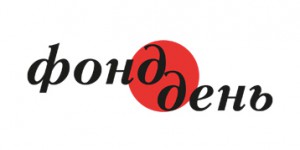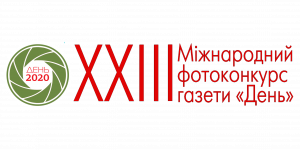State building is a far from simple process requiring tremendous effort by both government officials and ordinary citizens. Implementing state building projects step by step, stabilizing and building up the economy, social protection, and strengthening the potential for national defense — are all tasks correctly regarded as the highest priorities in most countries. There are, however, other nonetheless important issues. In its tenth year of independence Ukraine is still faced with the threat of losing its cultural identity. This problem has a number of significant aspects that must be solved without delay. I will dwell on just one of them.
The problem of returning unlawfully exported cultural values is mostly dealt with at the international level, drawing into its orbit the interests of many sovereign states. In other words, solving it depends on the good will of all the contracting parties. Over the past decade the international community has developed an impressive legal framework, primarily under UN auspices. To an extent, these instruments regulate the methods and means of settling disputes involved in the return of cultural values unlawfully taken away from their countries of origin. To some measure, this means that one must go further; mankind keeps changing in the course of its evolution and the same applies to the rules of the game set by sovereign states. The situation is anything but simple, it has to be constantly monitored by Ukraine as a UN member and an independent subject of international law protecting its national interests in the world arena. A positive aspect is that the problem is being handled in Ukraine not only by the competent authorities but also by a private law firm making arrangements possible between the interested parties. This will allow Ukraine to conduct an active policy aimed at returning such cultural values without complicating its relations with other countries.
The law firm is known as Legal Advisor, and it has spent a year studying the possibility of returning cultural treasures to Lviv. Work is being done in two directions, but on this later.
For many the problem of returning Ukrainian DЯrers is quite familiar. Attempts have been made to that end. At present, the Ukrainian side must prove its title to the DЯrer collection, as Poland also claims it. The thing is that part of the Osolineum Archives, originally located in Lviv, was transferred to Wroclaw in western Poland during Soviet times. The institution had received the drawings from Prince Henryk Lubomirski on condition that they would forever remain in the Galician capital of Lviv. In 1941, the collection was confiscated by the Nazis and later scattered at various auctions. Ukraine thus faces a very difficult problem. A degree of optimism is inspired by the fact that returning cultural valuables is now being actively discussed at the international level. Earlier such issues have been dealt with mainly under UN aegis. Now they are dealt with by individual countries, allowing the conclusion of a series of bilateral and multilateral agreements, and the process of mutual restitution is gaining momentum. Recently the Montreal Art Museum returned to Hungary a canvas by sixteenth century Italian artist Giorgio Vasari. In 1966, the Berlin Museum received as a voluntary donation of five pictures lost during World War II and discovered at an art gallery in Ontario. In 1993, as part of a bilateral cooperation program, Ukraine signed a protocol on the transfer to Germany of a number of works of art relating to the life and work of Johann Wolfgang von Goethe. Many other examples could be cited, each attesting to the development of international cooperation in returning unlawfully exported cultural treasures.
Another precedent the Lviv lawyers could produce would be the return of an old Ukrainian icon. Many of those who have read about or visited Lviv’s National Museum will recall the grand exposition of Ukrainian icons from the twelfth to eighteenth centuries. However, few know that the museum was robbed in 1984. Over twenty icons were stolen with most still missing. One of them, The Entry to Jerusalem from the sixteenth century was discovered by Prof. L. S. Miliayeva in a German museum. Efforts are being made to return the icon to the Lviv National Museum. For many the process of returning stolen property to the rightful owner looks simple enough: the thing was stolen, we all know it, so please return it. In reality, it can take years for the interested parties to reach agreement. This is where the international legal framework steps in, explicitly regulating the conduct of every party.
In Ukraine, laws are drafted to provide reliable protection of the cultural heritage against uncontrollable exportation and embezzlement. A Ukrainian law On the Export, Import, and Return of Cultural Valuables was enacted in 1999. There is a state service monitoring such importation and importation, headed by Oleksandr Fedoruk, a Ph.D. in art. Together with Lviv experts they have worked out new regulations allowing effective control over cultural treasures. Yet such efforts by the state will not suffice unless the Ukrainian public is fully aware of what is happening. Each of us, by informing local authorities or a competent law firm about cultural valuables appropriated by questionable collectors or lost during the Nazi occupation could not only restore our ownership, but also enrich our own state.







